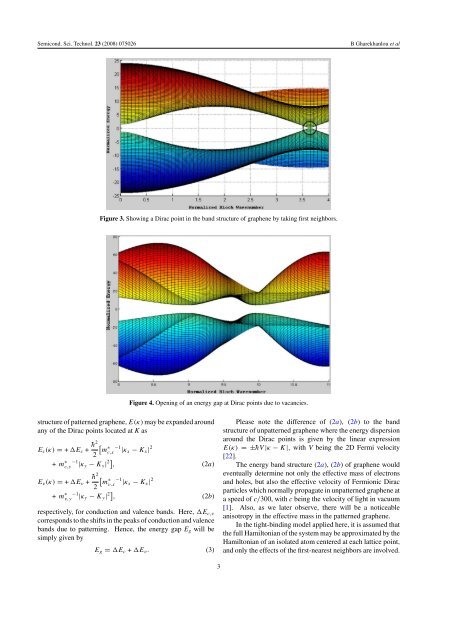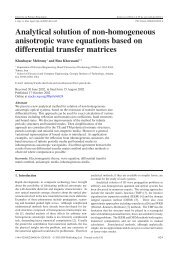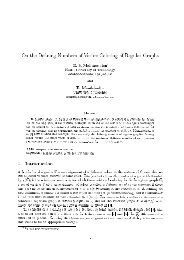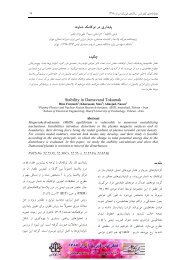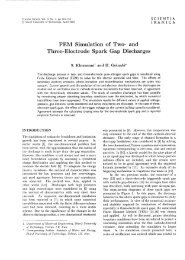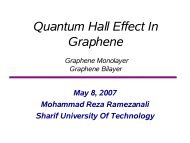Tight-binding description of patterned graphene
Tight-binding description of patterned graphene
Tight-binding description of patterned graphene
You also want an ePaper? Increase the reach of your titles
YUMPU automatically turns print PDFs into web optimized ePapers that Google loves.
Semicond. Sci. Technol. 23 (2008) 075026B Gharekhanlou et alFigure 3. Showing a Dirac point in the band structure <strong>of</strong> <strong>graphene</strong> by taking first neighbors.Figure 4. Opening <strong>of</strong> an energy gap at Dirac points due to vacancies.structure <strong>of</strong> <strong>patterned</strong> <strong>graphene</strong>, E(κ)may be expanded aroundany <strong>of</strong> the Dirac points located at K asE c (κ) = + E c + ¯h2 [m∗ −12 c,x |κ x − K x | 2+ m ∗ c,y −1 |κ y − K y | 2] , (2a)E v (κ) = + E v + ¯h2 [m∗ −12 v,x |κ x − K x | 2+ m ∗ v,y −1 |κ y − K y | 2] , (2b)respectively, for conduction and valence bands. Here, E c,vcorresponds to the shifts in the peaks <strong>of</strong> conduction and valencebands due to patterning. Hence, the energy gap E g will besimply given byE g = E c + E v . (3)Please note the difference <strong>of</strong> (2a), (2b) to the bandstructure <strong>of</strong> un<strong>patterned</strong> <strong>graphene</strong> where the energy dispersionaround the Dirac points is given by the linear expressionE(κ) =±¯hV |κ − K|, with V being the 2D Fermi velocity[22].The energy band structure (2a), (2b) <strong>of</strong> <strong>graphene</strong> wouldeventually determine not only the effective mass <strong>of</strong> electronsand holes, but also the effective velocity <strong>of</strong> Fermionic Diracparticles which normally propagate in un<strong>patterned</strong> <strong>graphene</strong> ata speed <strong>of</strong> c/300, with c being the velocity <strong>of</strong> light in vacuum[1]. Also, as we later observe, there will be a noticeableanisotropy in the effective mass in the <strong>patterned</strong> <strong>graphene</strong>.In the tight-<strong>binding</strong> model applied here, it is assumed thatthe full Hamiltonian <strong>of</strong> the system may be approximated by theHamiltonian <strong>of</strong> an isolated atom centered at each lattice point,and only the effects <strong>of</strong> the first-nearest neighbors are involved.3


